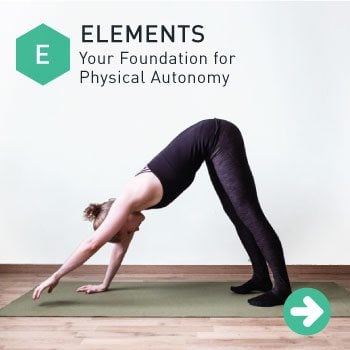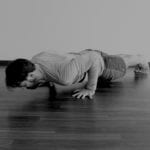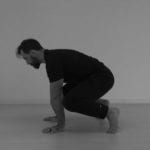You hear it all the time: the basics are important.
But what does that mean? When you watch your athletic role models, it certainly doesn’t look like they’re working on “the basics”–they’re doing all sorts of crazy, high-level skills and tricks you can only dream of …right?
“I already know that exercise.”
“This is too easy. I need more of a challenge.”Wake up. You NEVER graduate from the basics. https://t.co/v5ihj3G5qD
— GMB Fitness (@gmbfit) December 28, 2020
What you’re not seeing when you watch those impressive skills is the time and dedication they’ve put into developing the necessary attributes to achieving those skills.
And you’re also not seeing this: those basic attributes are universal.
In this article, I’ll show you what those attributes are and how to build them to reach your goals faster.
Breaking Down the Basics
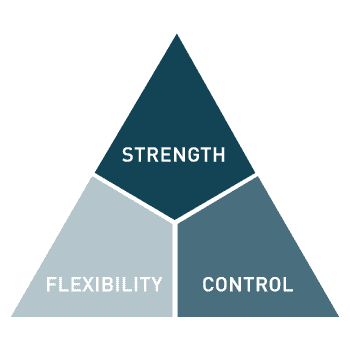 Many people think “the basics” just means beginner exercises, but when we talk about the basics, we’re referring to the foundation–the “base”–of the skills and movements you’re trying to achieve.
Many people think “the basics” just means beginner exercises, but when we talk about the basics, we’re referring to the foundation–the “base”–of the skills and movements you’re trying to achieve.
That will differ depending on your goals and starting point, but it stems from three primary attributes:
- Strength–this includes power and endurance
- Flexibility–this includes mobility and joint health
- Control–this includes balance and coordination
Every skill or exercise can be broken down into these most basic attributes. This means that, no matter how much you struggle with a particular exercise, you can break it down into these attributes and focus on the areas you struggle with the most. Here’s an example of this:

The bear is one of the basic movements we teach in our Elements course. But there’s a lot more to it than meets the eye. It can be broken down into:
- Shoulder control
- Cross-body coordination
- Hip mobility
- Spinal extension
- Hamstring and calf flexibility
- Wrist strength
When you look at the bear (or any movement/exercise) as a collection of these smaller components, it helps you break the skill down into the parts you struggle with the most, so that you can spend more time working on those areas.
But this applies to far more advanced skills too. The more complex the skill, the more components it can be broken down into.
And shoring up those basic components is what allows for mastery of skills at any level. The advanced athletes you love to watch do this all the time. They take a skill or movement they want to get good at, and practice the basic components of that skill over and over again, until those components come together to create skill mastery.
In the next section, we’ll look at the three primary attributes–Strength, Flexibility, Control–and show how to build the attributes you need for the skills you want.
Strength–What it’s Made Of and How to Build it

The basic components of strength include power and endurance.
It’s no secret that strength is a necessary part of athleticism and physical capability, but it’s often misunderstood.
Many fitness programs teach strength only in terms of how much weight you can lift, how many sets and reps you can bang out, or how big your muscles are. Those markers of strength are okay, but they’re pretty limited and don’t tell you much about a person’s athletic ability.
And when you’re trying to break down a skill to tackle its basic components, the amount of weight you’re benching probably won’t help with that.
Instead, let’s break down the attribute of strength even further and look at what it’s made of:
Power
Power considers how quickly you can use your strength. For skills like jumps, martial arts that involve kicks, and many gymnastic exercises, power is key.
If you practice a sport or activity that requires a good amount of power, then this is the aspect of strength you want to spend time building. One way to build power is by training jumps. Our jump tutorial has progressions to match every skill level.
Endurance
Endurance is the ability to use your strength for long periods of time.
Many sports, like Brazilian Jiu Jitsu, running, and climbing require high levels of strength endurance. If you do anything like that, you should focus on this aspect of strength.
In addition to doing more of your favorite endurance activities, locomotion is a great way to work on this attribute.
Flexibility–What it’s Made Of and How to Build it

Mobility and joint health are necessary parts of flexibility.
Many people associate flexibility with advanced stretches, like the splits, but in reality, “flexibility” is just the ability to get into the positions you want and need to get into.
So, no matter what activities or skills you practice, flexibility is a basic necessity. Here’s what it includes:
Mobility
In the fitness world, the “mobility vs. flexibility” debate is neverending, but the truth is they’re inseparable.
Flexibility, in technical terms, refers to the pliability of a muscle, while mobility is the application of that pliability. Unless you’re training for the nonexistent sport of having really stretchy muscles, your favorite activities likely require applied flexibility (a.k.a. mobility).
A good example of how to train for this is how we teach the squat. It’s often looked at as a static flexibility exercise, but see our bodyweight squat tutorial to learn how you can put it into motion.
Joint Health
Flexibility is just as much about the joints as it is about the muscles and tendons. If your joints aren’t moving well, there is likely poor pliability in your muscles, and vice versa. You need both your joints and muscles to be healthy to get into a deep squat.
Targeted stretching and mobility work, like we show in our Body Maintenance Guide, can help your joints to move well which will help you achieve greater levels of flexibility.
Having healthy joints, without pain or discomfort, is fundamental for complex skill and athletic ability.
Control–What it’s Made Of and How to Build it

Balance and coordination are the basics of body control.
Control is what makes it possible to apply your strength and flexibility smoothly and with intention. The smooth performance of a skill means steady and obvious control through every inch of your movement.
This is a basic attribute of athletic performance because, without control, the more obvious attributes of strength and flexibility are not as useful.
Body control is what sets impressive athletes apart. Here’s what control is made up of:
Balance
Being able to maintain balance through difficult positions is essential to controlling your body. The key, though, is that “difficult positions” is dependant on the person moving in those positions.
If you’re a regular joe, you may work on your balance by working on front scales or practicing standing on one leg with your eyes closed, whereas a seasoned dancer would need more complex challenges to improve their balance in motion.
Coordination
Coordination is what lets you perform complex movements faster, smoother, and with more confidence.
Activities that specifically target coordination are helpful because our nervous system creates pathways from the brain to the body based on repetitive action.
If you want to control your movements in whatever physical activities you love, working on coordination is important.
Why Minimums Aren’t Useful as Basics
It’s really important to understand that basics are not a fundamentally agreed-upon thing.
Basics require a qualifier.
What they are depends upon what you’re doing and what you need to improve upon. Anything else is arbitrary. What is fundamental is that the specific aspects of strength, flexibility, and control that apply to your goals are basic–but they have to apply specifically, not generally.
Why a 60-Second Handstand Isn’t All That
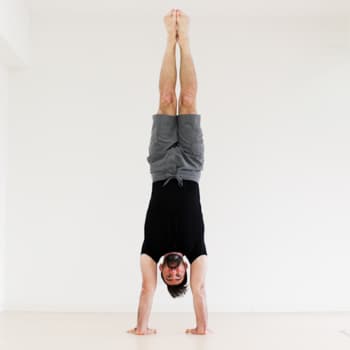 Let’s look at the handstand as an example.
Let’s look at the handstand as an example.
A lot of groups say a one- to two-minute hold is a fundamental requirement for “mastering” handstands. But that really is quite arbitrary.
Do you really need to get that before doing anything else?
Now there are a lot of great reasons that training to do a handstand for 60-odd seconds would be beneficial for most people. But it’s an irrational thing to say that this is a basic standard that everyone needs.
A one-minute handstand hold can’t really be called a “basic” because the handstand itself is built upon other components. Working on your wrists, opening your shoulders, and strengthening your core and hips are the true basics of the handstand hold–not the hold itself and not a number pulled out of thin air.
So, instead of following arbitrary definitions of “the basics,” you can break down the skills you’re working on into their most basic parts and work on improving those.
That’s the true meaning of “mastering the basics.”
Practice Your Basics
It’d be easy to list out a series of exercises, with a number of repetitions or set times to hold, and call those the GMB Fundamentals. It’s comforting to have a specific list that you can just put a check next to and move on.
But that’s not what we are going for. We’re working on building physical autonomy, and that includes gaining an understanding of what your body needs for the goals you have.
Our foundational program, Elements, is all about assessing your needs and working on the basics of strength, flexibility, and control, in order to help you move freely with physical autonomy. When you know what your basics are for what you’re trying to do, you can address those head-on.
The real basics lie in the underlying structure that ties together the movements you perform, and Elements will help you build that structure.
Build Your Basics
With Elements, you’ll build the strength, flexibility, and body control you need for the activities you love, through assessment and targeted exercises.

